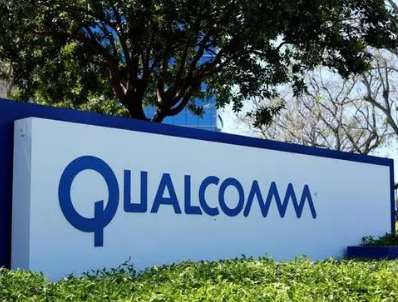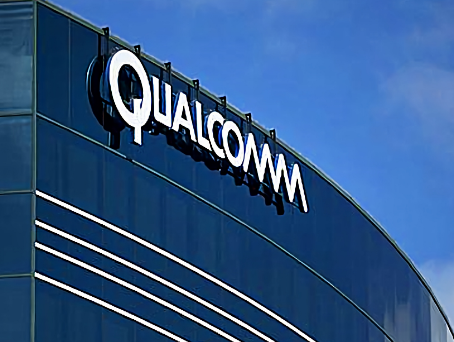Qualcomm, MediaTek eye slice of India’s IoT market; focus on NBIoT
US-based chipmaker Qualcomm and Taiwan’s MediaTek are betting big on India’s Internet of Things (IoT) market, and are said to be working with various device makers and telecom service providers to drive the IoT ecosystem in India, especially focusing on the narrow-band IoT (NB-IoT) segment.
“We do see a big potential in the IoT space, especially NB-IoT. We are one of the leading players as the processor vendors for NB-IoT. The progress is critical,” MediaTek India's country head for corporate sales international Kuldeep Malik, told ET. He said that MediaTek already has an IoT ecosystem ready with its module or device vendors.
Jim Cathey, SVP and president, APAC & India, Qualcomm recently told ET that the company is focused on driving IoT through its collaboration with small startups to enable consumer and industrial IoT along with smart city use cases in India.
Qualcomm’s director of business development, Uday Dodla separately said that the company has been building an “effective ecosystem of OEM and ODM collaborators to serve both consumer and industrial IoT segment.”
In India, Qualcomm is collaborating its device partners to serve both consumer and industrial IoT segments, across applications like smart wearables, vision-intelligent cameras, extended reality devices, point-of-sale products and smart energy metering. It also has a “Design in India” program to give a push to the IoT space.
Mukesh Ambani-led Reliance Jio’s NB-IoT network is already live in cities like Mumbai, while other telcos like Vodafone are mulling over launching their respective NB-IoT networks in the country.
Analysts say that NB-IoT reduces device complexity, enables multi-year battery life, and provides deep coverage to reach sensors and meters in challenging locations such as remote rural areas or inside buildings.
Qualcomm’s Dodla said that NB-IoT is important as the stakeholders work towards designing smarter cities and buildings. “For Qualcomm, IoT and security represent one of our largest serviceable addressable opportunities in 2020,” he said.
India's IoT Policy drafted by the Ministry of Electronics and Information Technology has set an ambitious goal to create a $15 billion IoT industry in India by 2020. “Qualcomm is well poised to be a leading contributor towards that intent,” Dodla said.
Both chipmakers are currently working with Indian telecom operators for certification, and compliance testing of devices on their IoT networks.
MediaTek said that that it is working with its device partners to conduct interoperability tests with Indian telecom operators, and is targeting various segments with various partners.
“Once certification and compliance testing is done, deployment will happen,” Malik said.
Qualcomm’s solutions and close association with Indian network operators help OEMs provide devices that bridge between traditional cellular technologies and newer technologies like LTE- IoT, Dodla said.

There are times where there is a huge load in terms of users in a particular area. These AI-powered technologies can identify patterns and with the inclusion of IoT, these systems can effectively know, with the precise data available, how to route traffic. SK telecom's Telecom Advanced Next Generation Operational Supporting System (TANGO) uses big data analytics and machine learning to improve traffic management and network operations more broadly.
In India, MediaTek is driving discussions with its ODM and OEM partners for the deployment of smart meters and tracking solution with GSM fallback. It also sees a big revenue opportunity in the country’s smart city project that aims to transform 100 cities.
“A lot of discussion is happening on prepaid meters when it comes to smart city project. These re key areas we see huge potential. For the smart city projects, our device partners bid for tenders and participate in RFPs, and we support them accordingly,” Malik said.
Qualcomm’s Dodla said that the Indian IoT ecosystem is poised to grow rapidly, supported by the government’s heightened focus on developing Smart City projects and Digital India campaigns. “The emergence of smart homes, increasing internet penetration and a strong community of tech-savvy professionals and population will also drive the growth,” he added.
Malik, however, said that the IoT market is “fragmented and unorganized”, and it will only start to shape-up properly by early next year.
As per consultancy firm Deloitte, the IoT units in India are expected to see a growth of 31 times to reach 1.9 billion in 2020 from its current base of 0.06 billion. In terms of revenue, this opportunity could represent $9 billion by 2020 from $1.3 billion in 2016 -- a growth of 700%.
在线留言询价
- 一周热料
- 紧缺物料秒杀
| 型号 | 品牌 | 询价 |
|---|---|---|
| BD71847AMWV-E2 | ROHM Semiconductor | |
| TL431ACLPR | Texas Instruments | |
| MC33074DR2G | onsemi | |
| CDZVT2R20B | ROHM Semiconductor | |
| RB751G-40T2R | ROHM Semiconductor |
| 型号 | 品牌 | 抢购 |
|---|---|---|
| ESR03EZPJ151 | ROHM Semiconductor | |
| IPZ40N04S5L4R8ATMA1 | Infineon Technologies | |
| BP3621 | ROHM Semiconductor | |
| TPS63050YFFR | Texas Instruments | |
| STM32F429IGT6 | STMicroelectronics | |
| BU33JA2MNVX-CTL | ROHM Semiconductor |
AMEYA360公众号二维码
识别二维码,即可关注



























